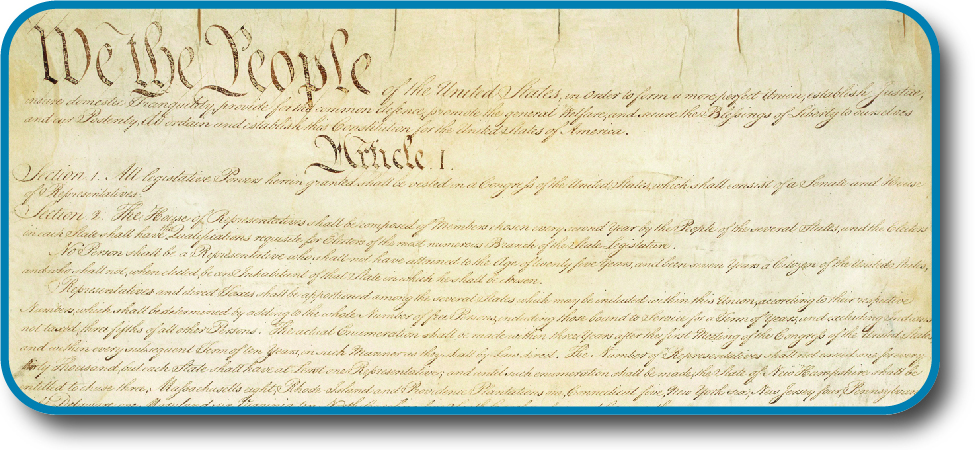| << Chapter < Page | Chapter >> Page > |

The U.S. Constitution , see [link] , is one of the world’s most enduring symbols of democracy. It is also the oldest, and shortest, written constitutions of the modern era still in existence. Its writing was by no means inevitable, however. Indeed, in many ways the Constitution was not the beginning but rather the culmination of American (and British) political thought about government power as well as a blueprint for the future.
It is tempting to think of the framers of the Constitution as a group of like-minded men aligned in their lofty thinking regarding rights and freedoms. This assumption makes it hard to oppose constitutional principles in modern-day politics because people admire the longevity of the Constitution and like to consider its ideals above petty partisan politics. However, the Constitution was designed largely out of necessity following the failure of the first revolutionary government, and it featured a series of pragmatic compromises among its disparate stakeholders. It is therefore quite appropriate that more than 225 years later the U.S. government still requires compromise to function properly.
How did the Constitution come to be written? What compromises were needed to ensure the ratification that made it into law? This chapter addresses these questions and also describes why the Constitution remains a living, changing document.

Notification Switch
Would you like to follow the 'American government' conversation and receive update notifications?